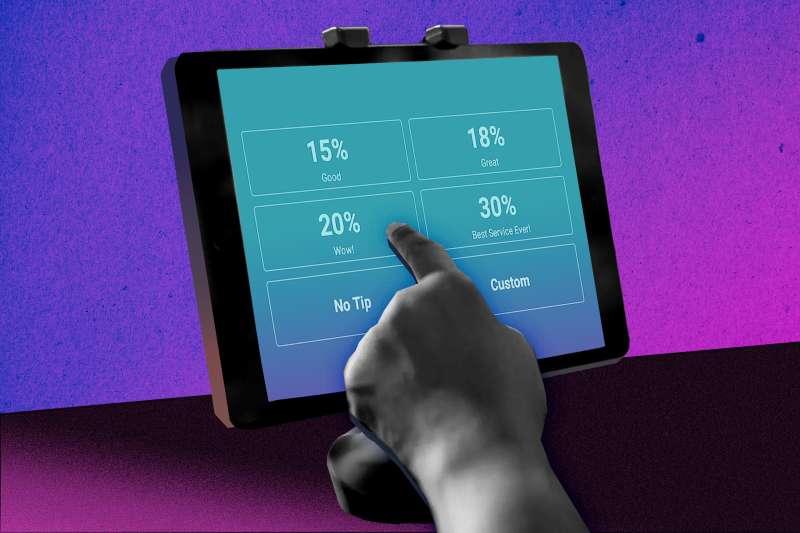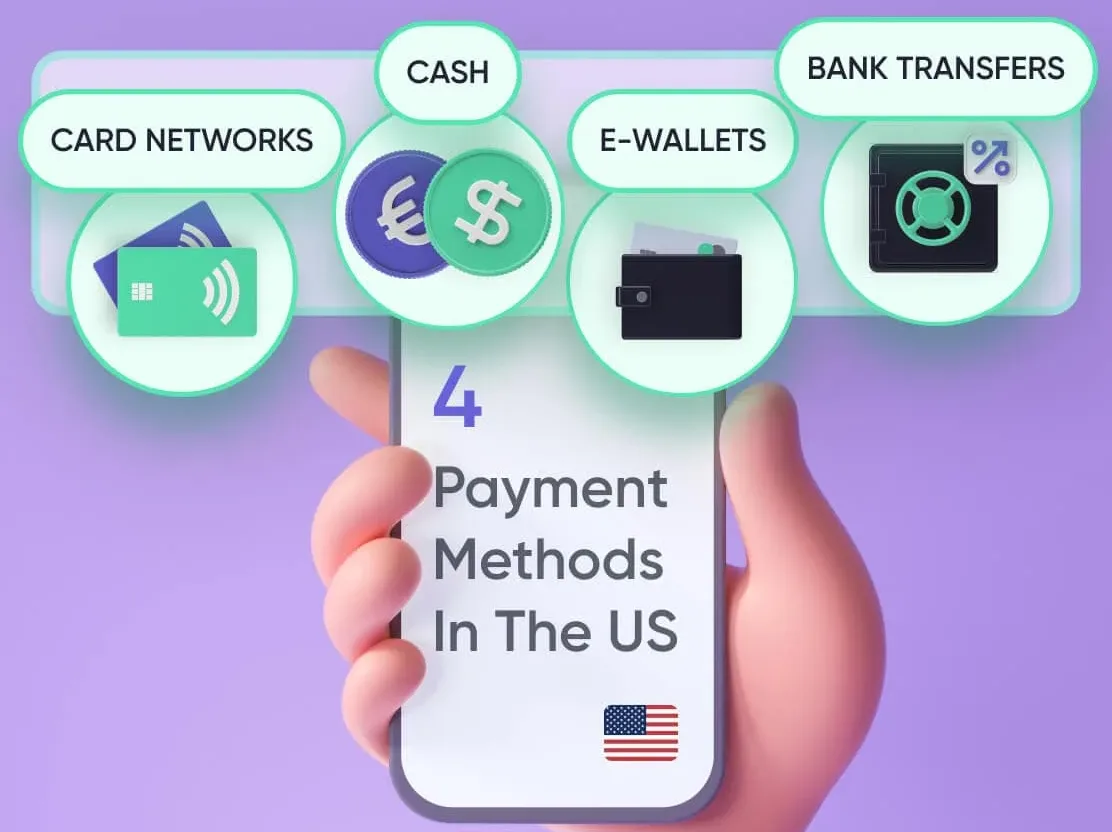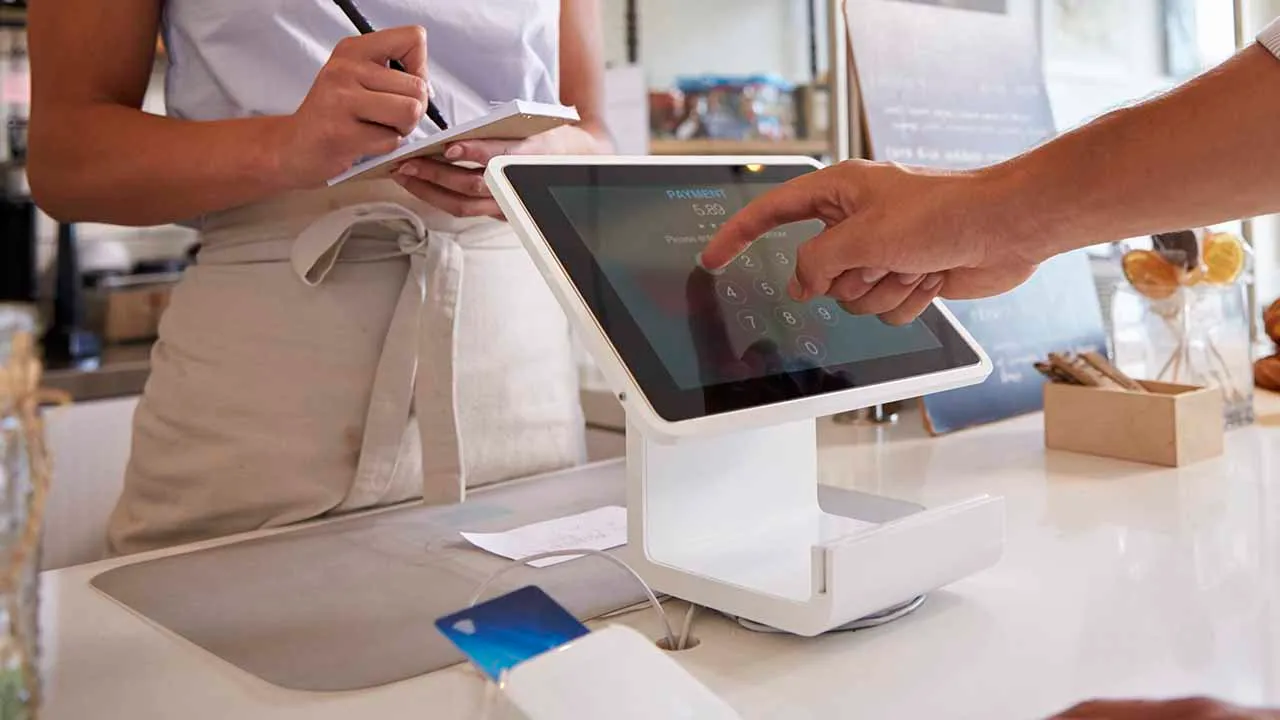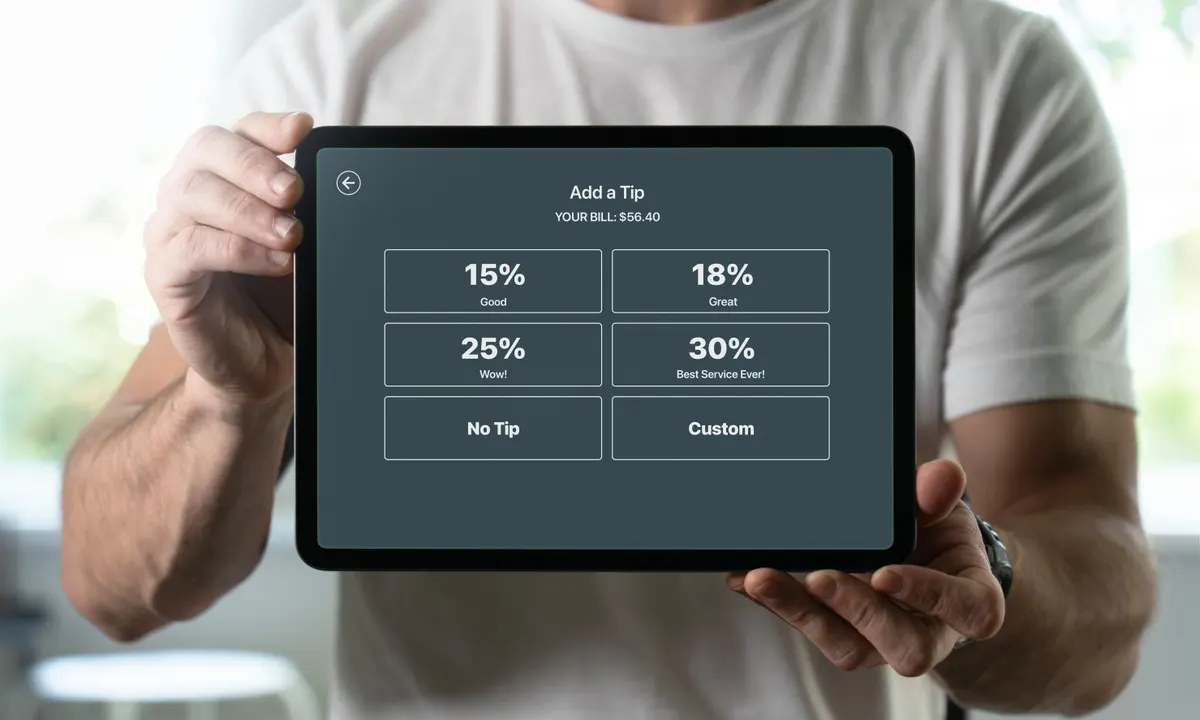Introduction to American Tip Screens

In today’s digital age, American tip screens have become an integral part of the service industry, revolutionizing the way customers and service providers engage in tipping. These innovative screens offer convenience, transparency, and efficiency, enhancing the overall customer experience. Let’s delve into the world of American tip screens, exploring what they are, how they work, and their advantages.
What are Tip Screens?
Evolution of Tip Screens in the US
Over the years, the traditional method of leaving cash tips has evolved into a more tech-savvy approach with the introduction of tip screens. These screens are electronic devices or software applications that allow customers to leave tips electronically, often after a service transaction.
Importance of Tip Screens in the Service Industry
American tip screens have gained significance in the service industry for several reasons. They streamline the tipping process, making it easier and more convenient for both customers and service providers. Additionally, they offer enhanced transparency, ensuring that tips are distributed fairly and accurately.
How Do American Tip Screens Work?
Overview of Tip Screen Functionality
Tip screens typically operate by presenting customers with various tipping options at the point of sale. After completing a transaction, customers are prompted to select a tip amount or percentage based on their satisfaction with the service received.
Different Types of Tip Screens
There are several types of tip screens available, each offering unique features and benefits:
Fixed Percentage Screens
These screens present customers with predefined tip percentages, such as 15%, 20%, or 25%. Customers can choose one of these options, making the tipping process quick and straightforward.
Custom Tip Screens
Custom tip screens allow customers to enter a specific tip amount of their choice. This flexibility caters to individual preferences and ensures that customers can tip according to the quality of service received.
Dynamic Tip Screens
Dynamic tip screens adjust the suggested tip amounts based on the total bill. For example, a screen may suggest a higher tip for larger bills, reflecting a percentage that aligns with the total amount spent.
Advantages of American Tip Screens

Improved Customer Experience
One of the primary benefits of American tip screens is the improved customer experience they offer. Customers appreciate the convenience of electronic tipping, eliminating the need for cash and providing a seamless transaction process.
Convenience for Customers and Service Providers
For customers, tip screens eliminate the hassle of calculating tip amounts or searching for cash. Similarly, for service providers, these screens ensure that tips are processed efficiently and accurately, reducing the risk of errors or discrepancies.
Enhanced Transparency in Tipping
American tip screens promote transparency in the tipping process. Customers can view and confirm the tip amount they are leaving, ensuring that their gratuity goes directly to the intended recipient.
In conclusion, American tip screens have transformed the way tipping is handled in the service industry. From their evolution to their functionality and advantages, these screens offer a modern, efficient, and transparent approach to tipping. Whether it’s a fixed percentage screen, a custom tip screen, or a dynamic option, these devices contribute to an improved overall customer experience. Next time you encounter an American tip screen, consider the convenience and transparency it provides.
Setting Up American Tip Screens
Installation Process
Setting up American tip screens involves a straightforward installation process. Businesses can choose from various hardware and software options, depending on their needs. The process typically includes mounting the screen, connecting it to the payment system, and configuring the tipping options.
Compatibility with Various Payment Systems

American tip screens are designed to be compatible with a wide range of payment systems. Whether a business uses traditional POS terminals, mobile payment apps, or online platforms, tip screens can seamlessly integrate with these systems.
Customization Options for Businesses
Businesses have the flexibility to customize their American tip screens to align with their branding and preferences. This customization may include choosing colors, adding logos, and selecting specific tipping options to display.
Best Practices for Using American Tip Screens
Optimal Placement for Maximum Engagement
Placing American tip screens in strategic locations can maximize customer engagement. Common placements include near checkout counters, on tabletops in restaurants, or within easy reach in service vehicles.
Design Tips for Effective American Tip Screens
The design of American tip screens plays a crucial role in encouraging tips. Businesses should ensure that the screens have clear, user-friendly interfaces with intuitive navigation. Including visual prompts and engaging graphics can also enhance the customer experience.
Utilizing Data and Analytics from American Tip Screens
American tip screens can provide valuable data and analytics to businesses. By analyzing tipping trends, businesses can gain insights into customer preferences and satisfaction levels. This data can inform decision-making processes and improve service quality.
Examples of Successful Implementation
Case Study: Restaurant A’s Increased Tips with American Tip Screens

Restaurant A implemented American tip screens at its checkout counters. Within months, the restaurant noticed a significant increase in tips from customers. The screens allowed patrons to easily select tip percentages or enter custom amounts, resulting in higher gratuities for servers.
Case Study: Taxi Service B’s Positive Customer Feedback
Taxi Service B equipped its fleet with American tip screens in each vehicle. Customers appreciated the convenience of tipping electronically, especially when paying with credit cards. The screens displayed suggested tip amounts based on the fare, leading to positive feedback and increased driver earnings.
Addressing Common Concerns about American Tip Screens
Are Tip Screens Ethical?
There have been debates about the ethics of American tip screens. However, it’s important to note that these screens simply provide an alternative method for tipping. The decision to tip and the amount remains entirely with the customer.
Do Tip Screens Affect Service Quality?
American tip screens are designed to enhance the tipping process, not to impact service quality. In fact, by making tipping more convenient and transparent, they can contribute to a positive overall service experience.
Privacy and Security Concerns with American Tip Screens
Businesses that use American tip screens prioritize customer privacy and security. These screens are designed to comply with data protection regulations and employ encryption methods to safeguard sensitive information.
Tips for Customers Using American Tip Screens
Understanding the American Tip Screen Interface
When using American tip screens, customers should familiarize themselves with the interface. This includes understanding how to select tip percentages, enter custom amounts, and confirm their tipping choice.
Customizing Tips Based on Service Received
Customers can use American tip screens to tailor their tips based on the quality of service received. Whether it’s a fixed percentage or a custom amount, customers have the flexibility to tip accordingly.
Tips on Tipping Etiquette in Different Scenarios
American tip screens make tipping easy, but it’s essential to consider proper tipping etiquette. In restaurants, for example, it’s customary to tip between 15% to 20% of the total bill. For other services, such as taxis or deliveries, a similar percentage is generally appreciated.
Future Trends in American Tip Screens
Integration with Contactless Payment Systems
As contactless payment methods continue to gain popularity, American tip screens are expected to integrate seamlessly with these systems. This will further enhance the convenience of electronic tipping.
Predictive Analytics for Personalized Tipping Suggestions
In the future, American tip screens may utilize predictive analytics to offer personalized tipping suggestions. By analyzing past tipping behavior and service quality, these screens could recommend tip amounts tailored to individual preferences.
Sustainability and Eco-Friendly American Tip Screen Options
In the realm of American tip screens, a growing trend focuses on sustainability and eco-friendly options. As businesses strive to reduce their environmental footprint, they are seeking tip screens that are designed with sustainability in mind.
These eco-friendly tip screens may incorporate materials that are recyclable or made from sustainable sources. Additionally, energy-efficient features and power-saving modes are being integrated to reduce energy consumption.

Frequently Asked Questions (FAQs) About American Tip Screens
What is the average tip percentage in the US?
The average tip percentage in the US typically ranges between 15% to 20% of the total bill amount. However, it’s important to note that tipping customs may vary by region and type of service.
Can I adjust my tip after I’ve submitted it through a tip screen?
In many cases, yes, you can adjust your tip after submitting it through a tip screen. Some tip screens offer a brief window of time after the transaction for customers to make adjustments if needed.
Do businesses see individual tip amounts or just the total tips collected?
Businesses generally have access to both individual tip amounts and the total tips collected. This data allows them to track tipping trends, assess service quality, and distribute tips to their employees accordingly.
Are there cultural differences in tipping with tip screens?
Yes, there can be cultural differences in tipping practices, even with the use of tip screens. In some cultures, tipping is not common or is done differently. Businesses need to be aware of these differences and accommodate diverse cultural norms.
How do tip screens benefit service workers?
Tip screens benefit service workers in several ways:
Increased Earnings: Tip screens can lead to higher tip amounts as they make it easier for customers to leave gratuities.
Transparency: Service workers can see the tips they receive in real time, providing transparency in the tipping process.
Efficiency: With tip screens, tips are processed quickly and accurately, reducing the likelihood of errors or missing tips.
Improved Customer Service: Knowing that tips are directly related to the quality of service, workers may strive to deliver exceptional customer experiences, leading to better tips.
Are American tip screens easy to install?
Yes, American tip screens typically come with straightforward installation instructions for businesses.
Can tip screens be integrated with mobile payment apps?
Absolutely, American tip screens are designed to seamlessly integrate with various payment systems, including mobile apps.
Do tip screens require internet connectivity to function?
It depends on the specific type of tip screen, but many models can operate offline and sync data when connected.
Are there options for multilingual tip screens?
Yes, some American tip screens offer multilingual interfaces to cater to diverse customer bases.
Can businesses track individual server tips with tip screens?
Yes, businesses can use the data and analytics from tip screens to track tips per server, aiding in performance evaluation.
Conclusion
In conclusion, American tip screens have transformed the tipping experience in the service industry, offering a modern and efficient way for customers to show appreciation for excellent service. Throughout this article, we’ve explored the evolution, functionality, advantages, and best practices of American tip screens. Let’s recap the key points and look towards the future of tip screens in the US.
Recap of the Benefits of American Tip Screens
Convenience: American tip screens make tipping easier and more convenient for customers, eliminating the need for cash.
Transparency: They promote transparency in tipping, allowing customers to see and confirm the tip amount they are leaving.
Efficiency: Tip screens streamline the tipping process, reducing wait times and ensuring accurate processing of tips.
Improved Customer Experience: By offering various tipping options, tip screens enhance the overall customer experience, leading to increased satisfaction.
Future Outlook for Tip Screens in the US
The future of American tip screens looks promising with ongoing advancements in technology and customer preferences. We anticipate:
Integration with Contactless Payment Systems: Tip screens will likely integrate seamlessly with contactless payment methods, further enhancing convenience.
Predictive Analytics: There’s potential for tip screens to use predictive analytics to offer personalized tipping suggestions based on past behavior and service quality.
Sustainability: The trend towards eco-friendly tip screens made from recyclable materials and energy-efficient designs will continue to grow.
Encouraging a Positive Tipping Culture with Tip Screens
American tip screens not only facilitate tipping but also encourage a positive tipping culture. They empower customers to express appreciation for good service and provide service workers with a transparent and efficient way to receive tips. By fostering a culture of gratitude and recognition, tip screens contribute to a more rewarding service experience for all.
Additional Resources
Links to Recommended Tip Screen Providers
Books and Articles on Tipping Practices in the US
The Gratuity Guide: A History of Tipping, in the U.S. and around the World by Cynthia Hickman
Gratuity: A Guide to Tipping Etiquette in the US by Emily Post
Further Reading on Customer Service and Tip Screen Implementation
Delivering Great Customer Service: The Guide to Customer Service Excellence by Robert Bacal
Implementing Tip Screens: Best Practices for Service Businesses by Service Solutions Magazine
These additional resources can provide valuable insights into tipping practices, customer service excellence, and the implementation of tip screens in businesses.
In conclusion, American tip screens have revolutionized the tipping landscape, offering convenience, transparency, and efficiency. As businesses continue to embrace these innovative tools, we can expect a positive impact on customer satisfaction and service quality. Let’s tip our hats to the future of tipping with American tip screens!
Glossary
Key Terms:
Tip Screens: Electronic devices or software applications that allow customers to leave tips electronically, often after a service transaction.
Fixed Percentage Screens: Tip screens that present customers with predefined tip percentages, such as 15%, 20%, or 25%, for easy selection.
Dynamic Tip Screens: Tip screens that adjust suggested tip amounts based on the total bill, providing flexibility based on the amount spent.
Contactless Payment Systems: Payment methods that allow transactions to be processed without physical contact, often using near-field communication (NFC) technology.

